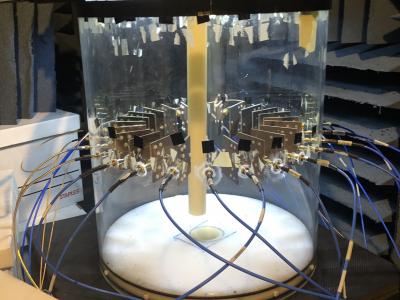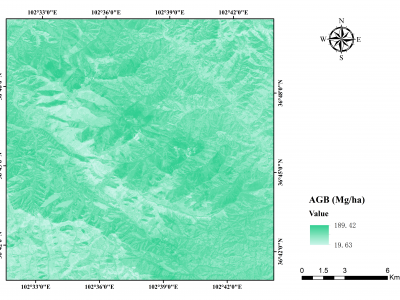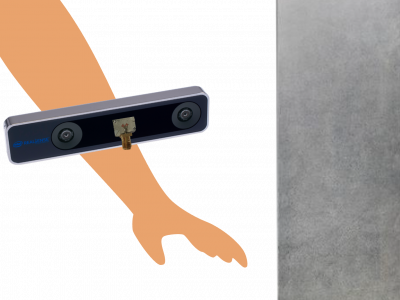Remote Sensing

As an artificial structure, tailings ponds exhibit regular geometric shapes and relatively straight dams in HRRSIs. Because the typical tailings dam is composed of an initial dam and successive accumulation dams, the tailings dam structure presents obvious linear stripe characteristics. The initial dam, constructed using sand, gravel, or concrete, has a bright color, while the color of the accumulation dam varies based on factors such as particle size, soil coverage, and vegetation restoration.
- Categories:
 24 Views
24 ViewsWith the goal of improving machine learning approaches in inverse scattering, we provide an experimental data set collected with a 2D near-field microwave imaging system. Machine learning approaches often train solely on synthetic data, and one of the reasons for this is that no experimentally-derived public data set exists. The imaging system consists of 24 antennas surrounding the imaging region, connected via a switch to a vector network analyzer. The data set contains over 1000 full Scattering parameter scans of five targets at numerous positions from 3-5 GHz.
- Categories:
 101 Views
101 ViewsWe employed Hexacopter unmanned aerial vehicle (UAV) equipped with the SPECIM FX17E hyperspectral camera to implement ultra-low-altitude flight aerial photography missions with atmospheric correction processing. We collected three hyperspectral images and combined them into three data pairs, which exhibit varying degrees of spectral shift. Among them, a hyperspectral image including six types of ground objects was collected in Changsha at 4:00 pm on September 27, 2021, with sunny weather and a flight altitude of 30m, named CSSunny.
- Categories:
 99 Views
99 ViewsAboveground biomass (AGB) is a vital indicator for studying the carbon sink in forest ecosystems. Semi-arid forests harbor substantial carbon storage but received little attention as high spatial-temporal heterogeneity. This study assessed the performance of different data sources (annual monthly time-series radar: Sentinel-1 (S1), annual monthly time-series optical: Sentinel-2 (S2), and single-temporal airborne LiDAR) and seven prediction approaches to map AGB in the semi-arid forests at the border between Gansu and Qinghai provinces in China.
- Categories:
 90 Views
90 ViewsThe performance of a novel ultra-compact Artificial Magnetic Conductor (AMC)-backed Twin Arrow antenna, operative in the 24 GHz frequency band, have been test for an electronic travel aid (ETA) system. Synthetic Aperture Radar (SAR) techniques for high-resolution electromagnetic imaging have been implemented by taking advantage of the natura movement of the user’s body. Experimental measurements for electronic travel aid purposes were conducted by generating electromagnetic images of the surrounding environment. The antenna is moved by means of simple arm swings.
- Categories:
 136 Views
136 ViewsThe effect of phase changes along the antenna radiation pattern beamwidth and bandwidth on synthetic aperture radar (SAR) imaging is evaluated by means of electromagnetic simulations. Electromagnetic images have been obtained in order to characterize the effect of the non-uniform phase of the antenna radiation pattern on this type of measurements. Three different situations have been analyzed: i) phase variations across the angular range, ii) nonlinear phase shift across the working frequency band and iii) antenna phase center shift across the bandwidth.
- Categories:
 434 Views
434 ViewsSAR-optical remote sensing couples are widely exploited for their complementarity for land-cover and crops classifications, image registration, change detections and early warning systems. Nevertheless, most of these applications are performed on flat areas and cannot be generalized to mountainous regions. Indeed, steep slopes are disturbing the range sampling which causes strong distortions in radar acquisitions - namely, foreshortening, shadows and layovers.
- Categories:
 228 Views
228 ViewsRecent advances in Wi-Fi sensing have ushered in a plethora of pervasive applications in home surveillance, remote healthcare, road safety, and home entertainment, among others. Most of the existing works are limited to the activity classification of a single human subject at a given time. Conversely, a more realistic scenario is to achieve simultaneous, multi-subject activity classification. The first key challenge in that context is that the number of classes grows exponentially with the number of subjects and activities.
- Categories:
 379 Views
379 Views
China has experienced a rapid urbanization over the past three decades, resulting in a prominent “urban core-suburban-rural” (USR) triad structure of human settlements. The USR disparities, which are related to the spatial variations of human activity intensity, have significant impacts on the spatiotemporal variations in various environmental issues such as carbon dioxide (CO2) emissions, carbon storage, water quality, etc. However, there is a lack of national-level, long-term USR dataset compared to the large number of “Urban-Rural” dual structure datasets.
- Categories:
 124 Views
124 Views






